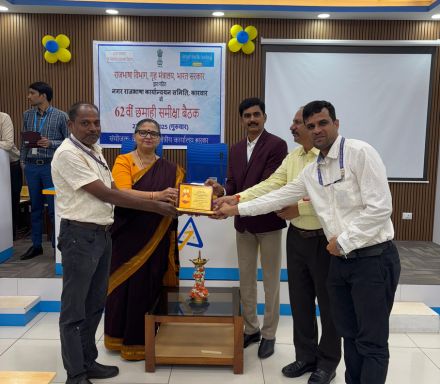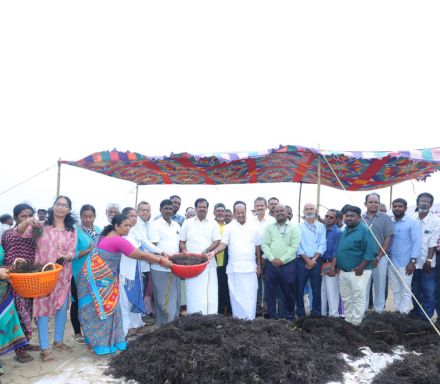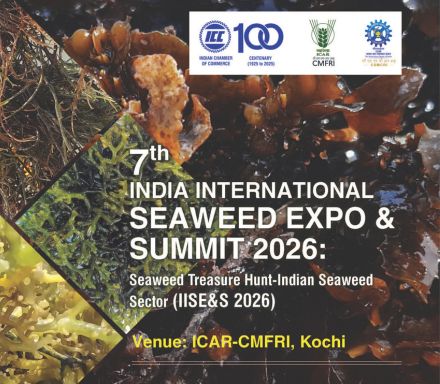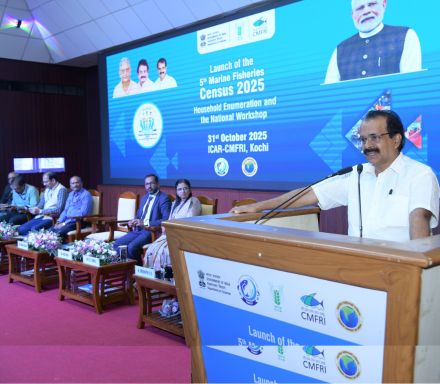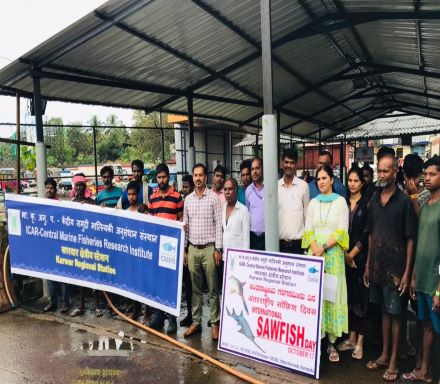
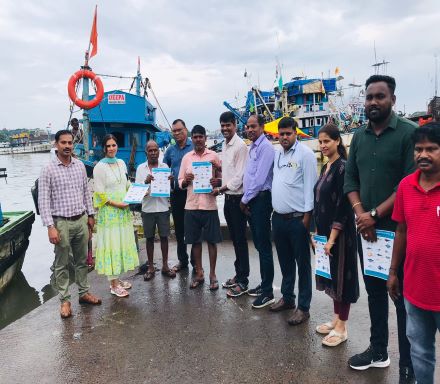
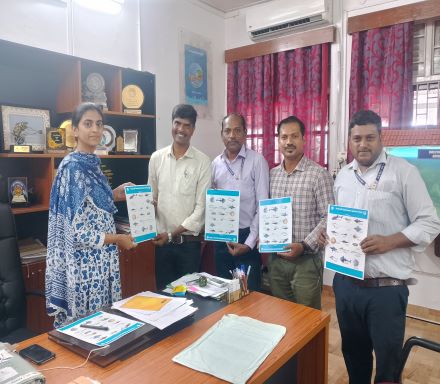
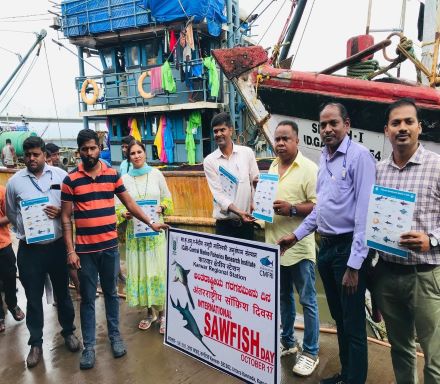
International Sawfish day celebration at CMFRI
As part of observance of International Sawfish Day, ICAR-Central Marine Fisheries Research Institute (CMFRI), Kochi conducted a Student-Scientist Interface on 17 th October 2024. The event emphasised the critical role of massive awareness initiatives for the conservation of critically endangered species, especially sawfishes and sharks.
The meet highlighted that sawfishes are on the verge of extinction due to habitat loss, plastic pollution, climate change and fishing gear entangling. While interacting with students, scientists of ICAR-CMFRI underlined the importance of educating them about conservation so as to get a broader reach among stakeholders and the public. They suggested avoiding or restricting gillnetting in natural habitats of sawfishes, releasing them caught in the fishing nets and adopting the best practice code of coastal development.
Sawfishes are elasmobranchs, meaning their skeleton is made of cartilage. They resemble sharks with a long narrow rostrum with sharp teeth on either side similar to a saw.
Addressing the gathering after inaugurating the meet, Shri Hibi Eden, MP said that the conservation of endangered species is crucial at a time when climate change is posing threat to ocean ecosystems.
"Promoting public awareness is vital to emphasise that everyone plays a part in conserving these species”, he said. He urged students to come forward to be involved in initiatives for coastal protection and waste management.
Dr Grinson George, Director of ICAR-CMFRI presided over the function. “Although fishermen are aware of the protected status of sawfishes, increased outreach programmes and greater stakeholder involvement are still necessary to effectively safeguard the remaining sawfishes in India”, he said.
Dr Shoba Joe Kizhakudan, Head of Finfish Fisheries Division said the main threat to sawfish is accidental capture, especially in trawl nets and gillnets. “Sawfishes are associated with critical coastal habitat, and hence are vulnerable to fishing as well as human activities in the coastal areas”, she said. Dr Remya L and Dr Livi Wilson also spoke on the occasion.
Around 300 students participated in the meet. Using a sawfish model, scientists from the institute provided students with a detailed explanation of the species. The interactive session sparked a lively discussion among students, covering topics such as conservation strategies, the possibility of captive breeding and the ethical implications of veganism.
On 17.10.2024, the ICAR- Central Marine Fisheries Research Institute, Karwar Regional Station hosted an “Awareness programme on International Sawfish Day” at Malim Fishing Harbour, Panaji, Goa.
Ms. Yashaswini, B., IAS, Director of Fisheries, Department of Fisheries, Goa initiated the awareness drive. The awareness drive was held in the presence of Dr. Sunitha Pauskar, Superintendent of Fisheries, Sub Office Malim, along with the staff members of the Department of Fisheries, Goa, Shri. Narayana, K. A., State Coordinator, NETFISH-MPEDA, Karnataka & Goa, Shri. Rohan Bhonsle, a representative from NETFISH-MPEDA, fishermen leaders, trawl and purse seine owners, and crew members. Dr. Kalidas C., Principal Scientist and Scientist-in- Charge, Karwar Regional Station of ICAR-CMFRI presided over the programme. Dr. Mahesh, V., Scientist, Dr. Kurva Raghu Ramudu, Scientist, Dr. Praveen N. Dube, Sr. Technical Assistant, and Shri N. Selvakumar, Sr. Technician from ICAR-CMFRI.
As part of the awareness campaign, pamphlets detailing the Protected elasmobranch species of India under Scheduled I of the Indian Wildlife Act, 1972 (amended in 2022) were distributed to participating fishermen and boat owners.
The key recommendations from the awareness programme are as follows:
- Release of Live Animals: Encourage fishermen to safely return live protected and vulnerable sawfish accidentally caught in fishing gears back to the sea.
- Partnerships with Conservation Organizations: Collaborate with marine conservation groups to enhance resources and messages aimed at protecting sawfish, leveraging expertise for broader outreach.
- Social Media Outreach: Utilize social media platforms to raise awareness by sharing facts, images, and videos related to sawfish.
Educational Workshops and Community Engagement Campaigns: Organize interactive workshops in fishermen community centres to educate fishermen about sawfish biology, ecological importance, and threats such as habitat loss and overfishing. Additionally, launch campaigns to involve local communities in conservation efforts.


